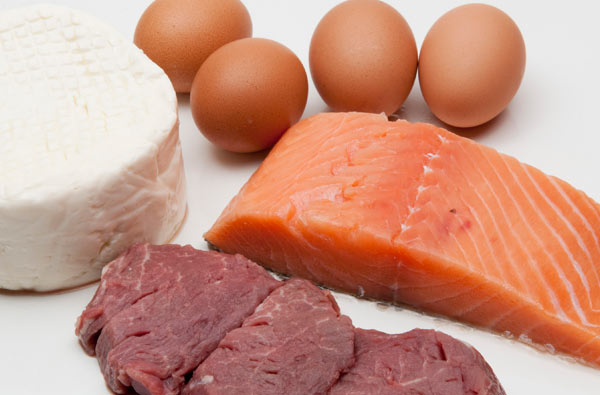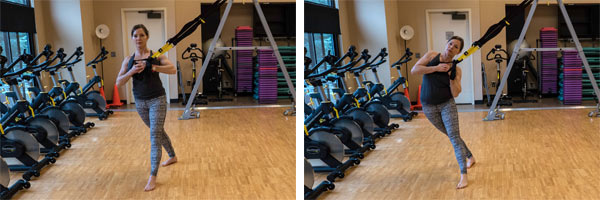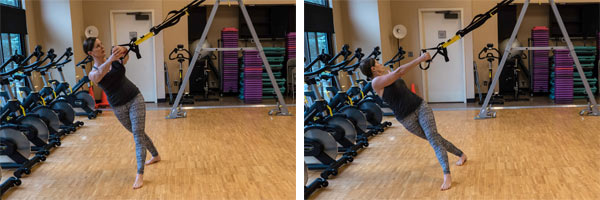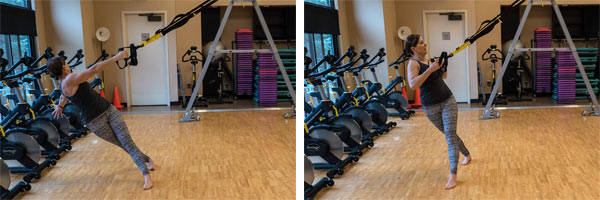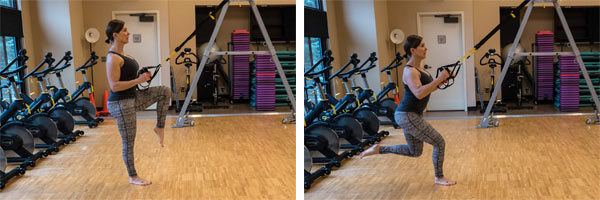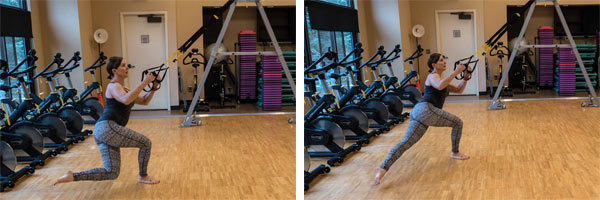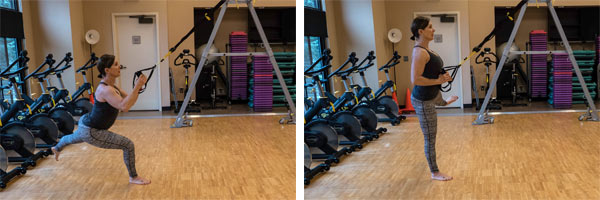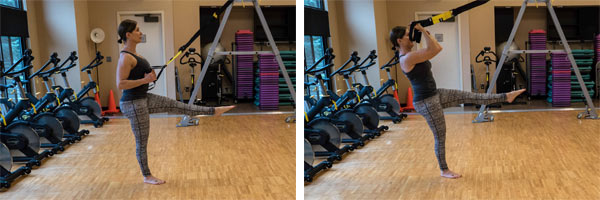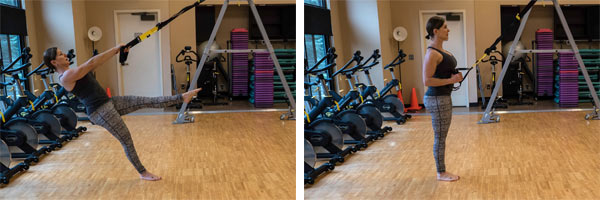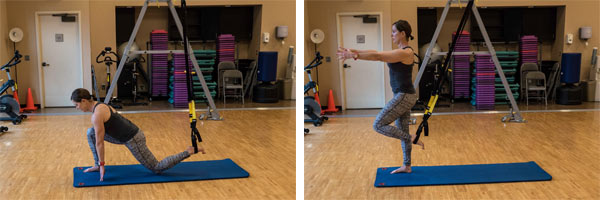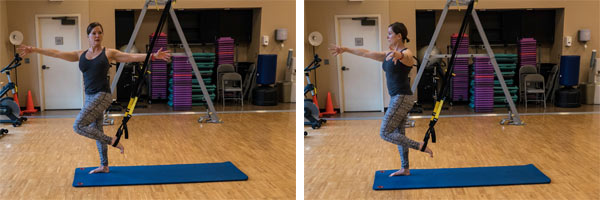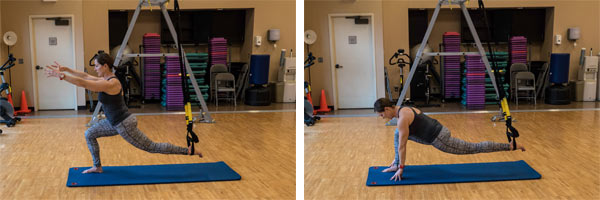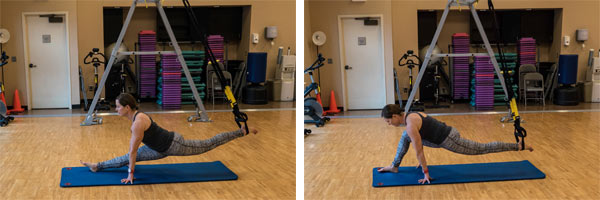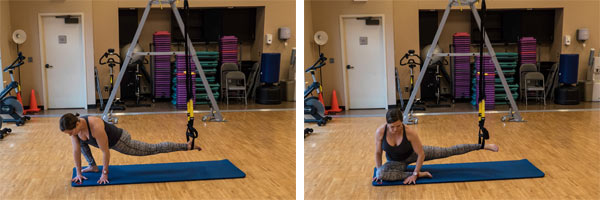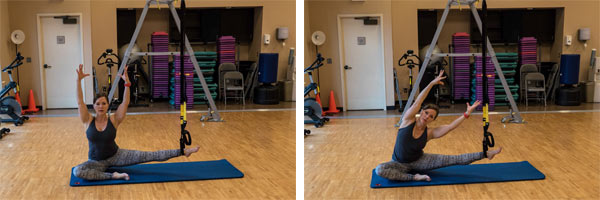Metabolic training is about getting the “biggest bang for your buck,”
but is often misinterpreted as “work out until you puke.” The true
definition of metabolic training is doing exercises that are geared
toward improving the capacity of certain energy systems—in other words,
almost anything! But metabolic training, in the traditional sense, is
likened to interval training—bouts of harder work followed by important
rest intervals. Metabolic training not only has the benefit of being fun
and taking less time out of your day, but this type of training also
increases one’s capacity for high-intensity exercise, offers a longer
“after burn” (burn more calories AFTER your workout is finished),
increases production of testosterone or growth hormone (helps maintain
muscle mass while still burning calories), and enhances the ability to
move more functionally.
So what should be one’s overall goal with metabolic training? Safely completing a large amount of work in a short amount of time.
Warm-up: 30 seconds of each at an easy-to-moderate intensity:
-Body-weight Squats: Warm-up those hips by challenging your range of motion while squatting.
-Alternate Leg Runners Stretch With Opening: Open up your hip flexors and rotational muscles by placing both hands on the inside of your front leg in a deep lunge. Reach the outside hand toward the sky, trying to create as much distance from one hand to another, while continuing to hold the runner’s stretch.
-Arm Swings (Forward and Backward): Loosen up your shoulders for the pressing and pulling movements to come.
-Lateral Lunges: Begin in a wide stance with toes pointed forward. Place one hand directly on top of the other in front of your body to brace your core, and sink your hips side to side.
Workout: Perform each exercise for 30 seconds at the highest intensity you can safely maintain. Follow the exercise with a 30-second rest and then move onto the next movement. After your warm-up, the metabolic training workout will take 10 minutes. For more advanced levels this workout can be repeated twice after a five-minute rest break.
Squat Jump
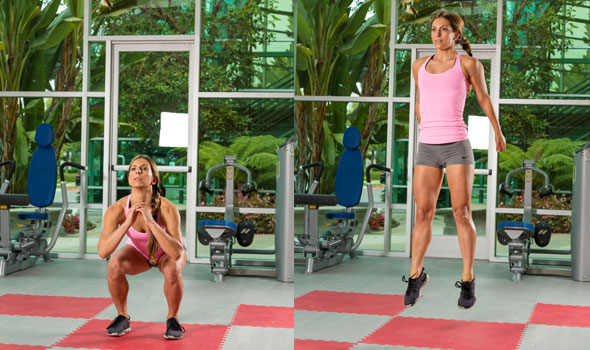
While maintaining perfect squat posture, explode off of the ground with both feet, making sure your knees are bent upon landing. (Regression: speed squats with no jump)
Kettlebell or Dumbbell Renegade Row
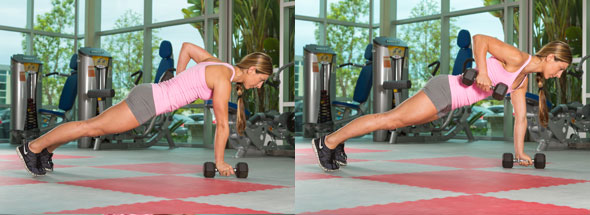
Maintain a solid plank position (no saggy hips!) and create a wide base of support with your feet. Alternate rows from one side to another with minimal rotation. (Regression: perform a hand plank with arm and leg raises)
Lunge Switch Jumps
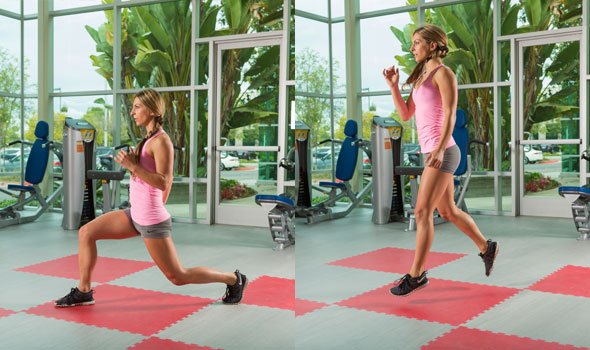
Lower down into a stable lunge with both knees bent to 90 degrees. Squeeze your glutes and explode off of the ground, landing in the opposite lunge position. Use your arms for added height and intensity. (Regression: alternating leg step-back lunges)
Kettlebell Single-arm Squat Push Press
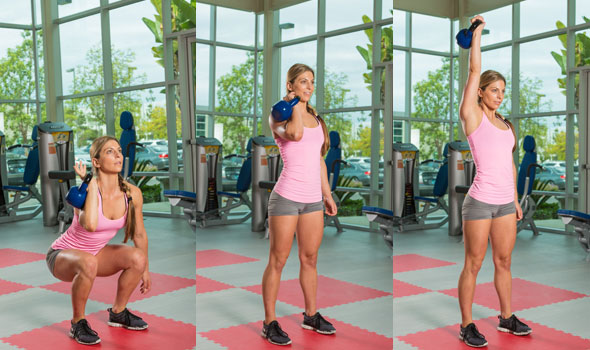
Begin with kettlebell in racked position. Sink your hips down and back and then stand with intensity while thrusting the kettlebell straight up to the ceiling. Repeat on the other side after 30 seconds of work and 30 seconds of rest. (Regression: single-arm kettlebell or dumbbell press)
Kettlebell Hard Swings
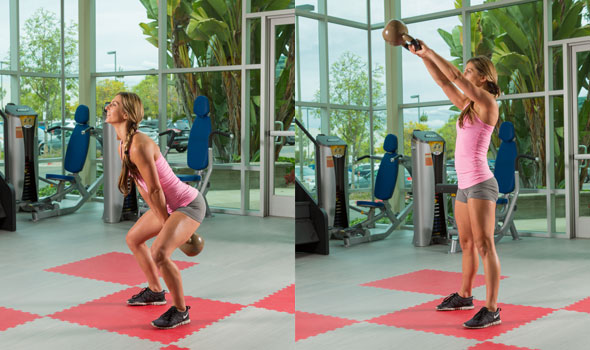
Select a challenging yet safe weight and initiate your swing with the hips. Brace the core and squeeze the glutes on the top of the swing and maintain a good hip hinge on the bottom. (Regression: dumbbell straight-leg deadlift)
Medicine Ball Wood Chops
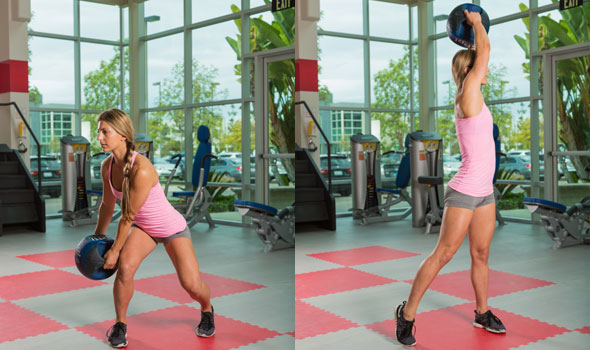
While lowering down to your squat, lower the medicine ball to the outside on your left knee. As you extend at the knees and hips, drive the medicine ball up to the right, bracing the core and squeezing the glutes on top to avoid an arched back. After 30 seconds on this side, rest for 30 and repeat on the other side. (Regression: seated medicine ball twists)
Skater Leaps
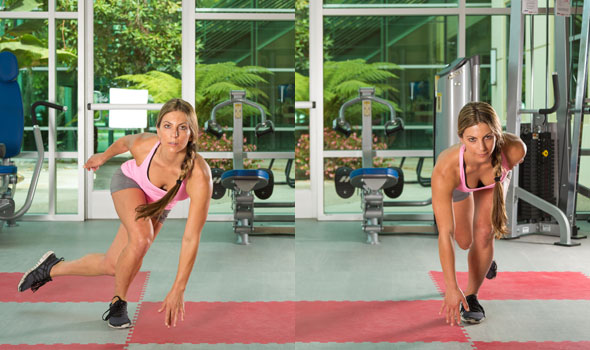
Push laterally off of the left foot and land on the right with a soft knee bend. If possible touch the floor with your left hand. Instantly explode off of the right foot onto the left with an immediate knee bend, touching the floor with the right hand. (Regression: side-step touches)
Battling Ropes Side Slams
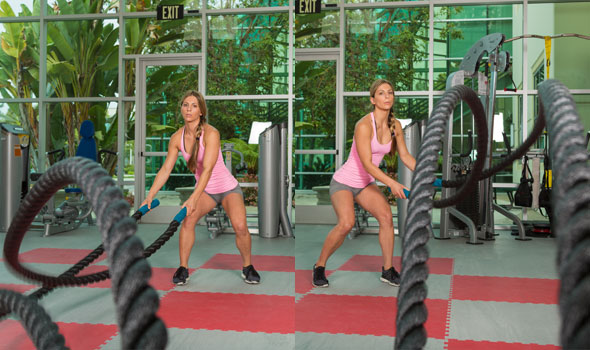
Hold the battling ropes in an overhand grip, beginning on the left side of the body. Lift the ropes up and over an imaginary fence in front of you and slam them down on the right side of your body. Repeat in the other direction while maintaining a solid hip hinge.
Source
So what should be one’s overall goal with metabolic training? Safely completing a large amount of work in a short amount of time.
The Workout
The exercises below use many muscle groups and can be very high
intensity. To ensure safety, regressions are listed for each exercise.
Be sure to respect the rest intervals so that the anaerobic energy
systems are always challenged!Warm-up: 30 seconds of each at an easy-to-moderate intensity:
-Body-weight Squats: Warm-up those hips by challenging your range of motion while squatting.
-Alternate Leg Runners Stretch With Opening: Open up your hip flexors and rotational muscles by placing both hands on the inside of your front leg in a deep lunge. Reach the outside hand toward the sky, trying to create as much distance from one hand to another, while continuing to hold the runner’s stretch.
-Arm Swings (Forward and Backward): Loosen up your shoulders for the pressing and pulling movements to come.
-Lateral Lunges: Begin in a wide stance with toes pointed forward. Place one hand directly on top of the other in front of your body to brace your core, and sink your hips side to side.
Workout: Perform each exercise for 30 seconds at the highest intensity you can safely maintain. Follow the exercise with a 30-second rest and then move onto the next movement. After your warm-up, the metabolic training workout will take 10 minutes. For more advanced levels this workout can be repeated twice after a five-minute rest break.
Squat Jump

While maintaining perfect squat posture, explode off of the ground with both feet, making sure your knees are bent upon landing. (Regression: speed squats with no jump)
Kettlebell or Dumbbell Renegade Row

Maintain a solid plank position (no saggy hips!) and create a wide base of support with your feet. Alternate rows from one side to another with minimal rotation. (Regression: perform a hand plank with arm and leg raises)
Lunge Switch Jumps

Lower down into a stable lunge with both knees bent to 90 degrees. Squeeze your glutes and explode off of the ground, landing in the opposite lunge position. Use your arms for added height and intensity. (Regression: alternating leg step-back lunges)
Kettlebell Single-arm Squat Push Press

Begin with kettlebell in racked position. Sink your hips down and back and then stand with intensity while thrusting the kettlebell straight up to the ceiling. Repeat on the other side after 30 seconds of work and 30 seconds of rest. (Regression: single-arm kettlebell or dumbbell press)
Kettlebell Hard Swings

Select a challenging yet safe weight and initiate your swing with the hips. Brace the core and squeeze the glutes on the top of the swing and maintain a good hip hinge on the bottom. (Regression: dumbbell straight-leg deadlift)
Medicine Ball Wood Chops

While lowering down to your squat, lower the medicine ball to the outside on your left knee. As you extend at the knees and hips, drive the medicine ball up to the right, bracing the core and squeezing the glutes on top to avoid an arched back. After 30 seconds on this side, rest for 30 and repeat on the other side. (Regression: seated medicine ball twists)
Skater Leaps

Push laterally off of the left foot and land on the right with a soft knee bend. If possible touch the floor with your left hand. Instantly explode off of the right foot onto the left with an immediate knee bend, touching the floor with the right hand. (Regression: side-step touches)
Battling Ropes Side Slams

Hold the battling ropes in an overhand grip, beginning on the left side of the body. Lift the ropes up and over an imaginary fence in front of you and slam them down on the right side of your body. Repeat in the other direction while maintaining a solid hip hinge.
Source












